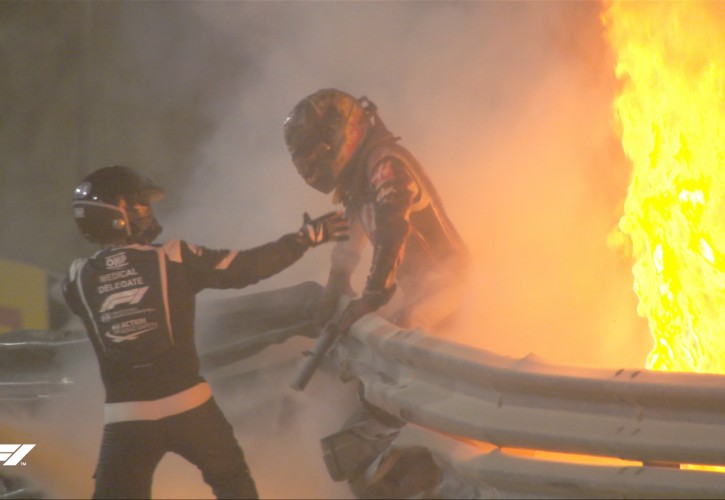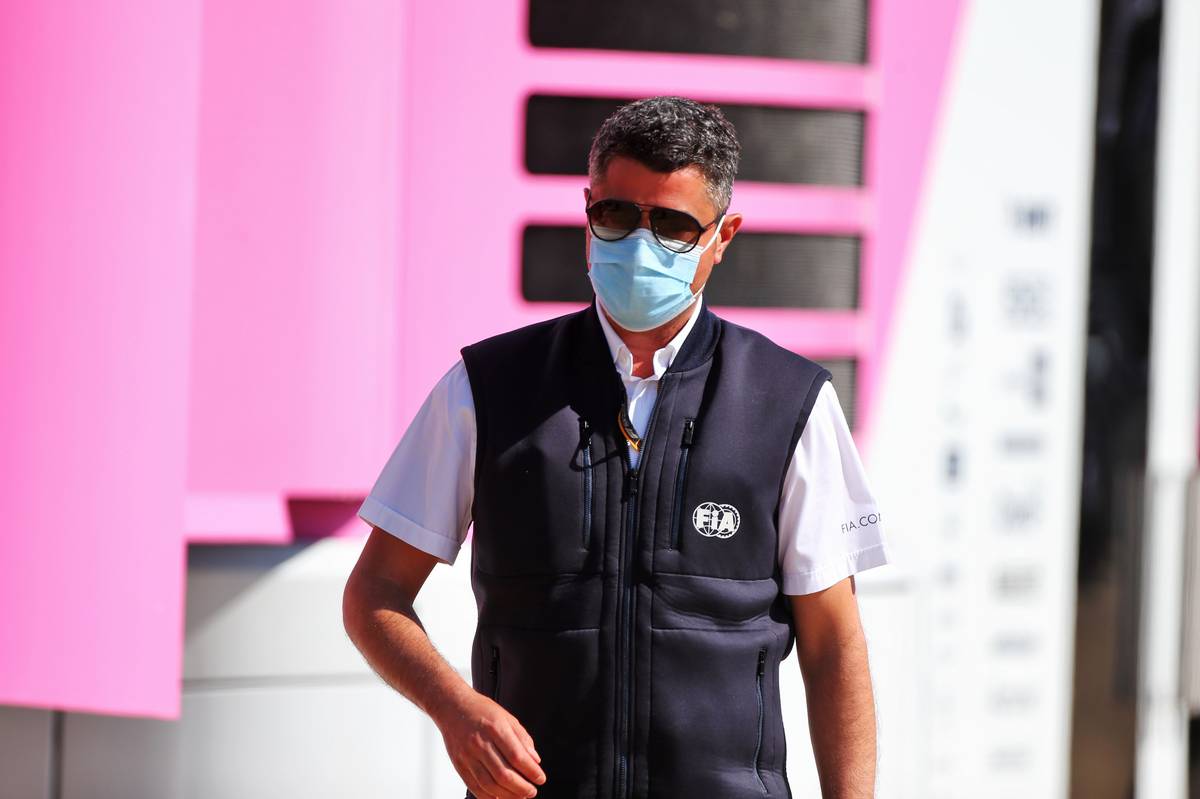
A new design of racing gloves have been given the thumbs up by drivers after a successful initial trial that took place over the Turkish Grand Prix weekend.
The FIA has been looking into improving the technology to protect drivers' hands from burns in the event of a major accident during a race.
That's in the wake of Romain Grosjean's horrific crash in Bahrain at the end of the 2020 season. The Haas driver survived the initial impact with the barrier and was able to jump clear of the burning wreck with the assistance of marshals and the crew of the medical car.
His worst injuries were burns to the hands which took months of follow-up procedures and rehabilitation to overcome before he began a new career in the United States in the NTT IndyCar Series.
As a result of the incident, five drivers including Lewis Hamilton and Sebastian Vettel were asked to help with testing the comfort and functionality of a number of new designs of gloves in Turkey offering increased fire resistance.
Normally only certified and approved safety apparel can be used during official F1 sessions such as practice and qualifying but the FIA can allow prototypes to be used on safety grounds.
However the gloves will still need to be formally approved for full-time use by the World Motor Sport Council before they can be homologated and introduced to all drivers.
Hamilton and Carlos Sainz were given gloves manufactured by Puma to try, while Vettel was using a pair made by Alpinestars. Daniel Ricciardo tried a a design from Sparco, and George Russell used gloves from OMP.
“After Romain’s accident we started working directly on this area,” F1 race director Masi told Motorsport-Total.com. in Turkey. "We realised very quickly that this is an area that can be improved upon together with the manufacturers.”

©Haas
The test was overseen by the FIA’s head of competitor and road user safety Nuno Costa. Masi reported that the feedback from the drivers was “consistently good” when it came to comfort and fit.
"I didn’t notice the difference," Ricciardo commented. “I knew that I was going to use them, but after the fact I didn’t know I used them.
"I’m trying to say that’s a good thing," he added. "I’m not very fussy with my kit and stuff, so I’m not that particular. But completely fine for me. It’s a nice addition without any downside, really.”
"It was literally about driver comfort, similar to the race suits we tested a few years ago when the new standard for race suits was introduced," Masi explained. “The flame retardant aspect has already proven itself according to our standards."
Even so, the test had identified minor areas of potential improvement for some of the new glove designs. “There are still a few small tweaks with some brands, but nothing insurmountable," Masi agreed.

The gloves reduce heat transfer to a drivers’ skin when exposed to direct heat. The new designs are expected to provide around 1.5 seconds of extra protection compared to the current version.
“It sounds minimal,” said Masi. “But as we’ve seen in those types of scenarios, every tenth of a second, millisecond counts."
The gloves must also maintain the dexterity required by drivers to operate controls on increasingly complex steering wheels.
“We can’t completely change that side of it because they’ve got to have that level of feeling," Masi acknowledged. "Particularly with something like their gloves, with everything that they have to operate.
"That’s why we have this practical test to get their feedback in a real-life situation," he added.
“We are very grateful to the drivers and the teams involved that we can actually use them and that we have been given this opportunity.
"It shows that we are trying to increase the level of protection as much as possible.”
Gallery: The beautiful wives and girlfriends of F1 drivers
Keep up to date with all the F1 news via Facebook and Twitter







